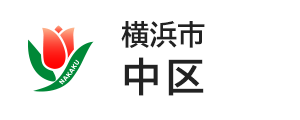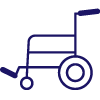- 橫濱市首頁
- 中區首頁
- 各種各樣的語言(Multilingual)
- English
- Public Relations Magazines
- Koho Yokohama Naka Ward Version(~2023)
- 2023
- August ①In the Rush to Save Lives, Every Second Counts! ➁Tell us about Home Health Care and Nursing Care!
從這裡開始是正文
August ①In the Rush to Save Lives, Every Second Counts! ➁Tell us about Home Health Care and Nursing Care!
This is an abridged version of “Koho Yokohama Naka-ku Ban,” Naka Ward Office’s public relations magazine. (Click here for the multilingual website of “Koho Yokohama City Edition”) Please note that all information is correct as of the time of publication and may be subject to change.
Last updated date:2024/10/2
▶▶ Beware of food poisoning!(2022/7)
▶▶ Events
① In the Rush to Save Lives, Every Second Counts!
[Inquiries] Kyūkyū Tantō, Keibō-ka (Emergency Aid Subdivision, Fire Suppression Division),
Naka Fire Station Tel/fax: 045-251-0119
Please use ambulances properly

Yokohama City currently has a fleet of 84 ambulances in operation. If these ambulances are used to transport people with minor illnesses or injuries to hospital, response times for those in a serious condition will be delayed. Only call an ambulance in an emergency. Please remember this principle.
Ratio of patients transported or not transported to hospital in an ambulance* (Naka Ward, 2022)
*Cases that did not result in the transportation of a patient by ambulance due to the individual’s refusal or other reasons.

Not transported: 35%
Transported: 65%
→ Naka Ward’s average non-transportation rate is significantly higher than Yokohama City’s average rate of 21%.
Breakdown of the degree of injury or illness of those transported to hospital by ambulance
Minor illness: 51%
Moderate illness: 41%
Serious or critical illness: 7%
Death: 1%
→ Excluding those who were not transported or who had minor injuries, only about 30% of all cases required hospitalization and treatment.
As time goes on, the chances of saving a life decrease rapidly.

① Approx. 50% of people die within 3 minutes after cardiac arrest
➁ Approx. 50% of people die within 10 minutes after respiratory arrest
③ Approx. 50% of people die within 30 minutes after massive hemorrhage
To save the life of an injured or sick person and help them reintegrate into society, it is of the utmost importance to provide life-saving treatment promptly.
If you are not sure whether to call an ambulance
Consult by phone
Yokohama City Emergency Medical Consultation Center
Call #7119 or 045-232-7119 (available 24 hours a day, seven days a week)
I would like to know which hospitals and clinics are available for emergency consultations → Select No. 1
Should I see a doctor immediately or call an ambulance? → Select No. 2

Access the Yokohama City Emergency Medical Consultation Guide from your computer or smartphone.
Select the relevant symptoms to check whether it is urgent or if there is a need to seek medical attention.
⇒ Yokohama City Emergency Medical Consultation Guide (Japanese)
Things we can do to help increase the survival rate
Live video communication system connecting 119 callers and the Firefighting Command Center via video
The first aid treatment you provide at the scene can help save lives.
A first aid video is transmitted to the caller according to the condition of the injured or sick person. By providing first aid to the sick or injured person at the scene of the emergency before the ambulance arrives, you can certainly improve their chances of survival. We appreciate your cooperation.

Firefighting Command Center
Command and control staff will send a URL for the live video communication system to the smartphones of callers who have agreed to cooperate with the live video communication system.

If you have an emergency, then please call 119 immediately. We are here 24 hours a day, 7 days a week, doing everything we can to help!
➁ Tell us about Home Health Care and Nursing Care!
[Inquiries] Kōreisha Shien Tantō (Elderly Support Subdivision),
Naka Ward Office Tel: 045-224-8167 Fax: 045-224-8159

Have you ever thought about where you would like to spend your time when you need medical or nursing care on a daily basis? Here is an introduction to home health care and nursing care.
You can receive medical care at home
What is the role of a visiting physician?
A visiting physician is a “family doctor” who regularly visits the patient’s home, acts as a bridge to the hospital, and consults with the patient at their home regarding any concerns or illnesses.

Home medical care begins in a variety of ways. In many cases, patients who have been hospitalized for broken bones or cancer wish to receive medical care at home and are requested to do so by a hospital specialist. Through visits, we provide support so that they can choose the most appropriate medical care.
Masatake Ishikawa
Ishikawa Clinic
Naka Ward Medical Association
For advice during a stay at hospital, please consult with the hospital’s counseling office
If you are thinking that you want to be discharged from hospital and go home, but are anxious to do so, please consult with someone at the hospital’s consultation room. We will come up with something together with you and help you prepare to go home.
What is the role of a medical social worker (MSW)?
At hospitals and other medical institutions, MSWs provide various consultations and support for patients and their families in their daily lives during medical treatment.

Although the thought of living at home while receiving care can be daunting, visiting physicians, visiting nurses, care managers, and other professionals can help. In addition, if medical attention becomes necessary during home care, you can seek advice on hospitalization at the Regional Comprehensive Care Unit or other facilities. It is a good idea to take on this challenge so that you have no regrets.
Harumi Sano
Medical Welfare Consultation Office
Yokohama Chuo Hospital
How to use long-term care insurance services
Long-term care insurance is a system mainly for people 65 years of age and older to receive assistance in daily living and physical care when independent living becomes more difficult.
General flow of procedures
Application (the individual concerned or a family member applies at the ward office or a community care plaza)
↓
Examination of mental and physical conditions
↓
Assessment and decision
↓
Use of nursing care services (select a care manager and consult with the care manager about what services are needed)
What kind of services are available?
Home-visit nursing care, home nursing care, day care, welfare equipment rental, etc.
*The content and amount of services available vary depending on the certified level of care required.
What is the role of a care manager?
Care managers consult with people in need of care and their families, organize the problems they are facing, and coordinate the necessary services.

People worry that, as they get older and need nursing care, they will be able to do fewer and fewer things on their own, and that consequently they will cause a nuisance to their families. They are also concerned about what will happen if they suddenly become ill or their condition worsens.
If you want to live at home, however, you can make use of long-term care insurance services and stay in your own home. There are many people who live at home while using long-term insurance services.
If you have concerns about living at home, please consult with us first. We will work with you to find a way for you to live at home with peace of mind.
Takayasu Makita
Representative of Kaigo no Wa!
Care Service Hokuzen Honmoku
If you have any concerns regarding care or medical care, you can consult with a local consultation service close to you
⇒ Community care plaza
Consultations on home medical care
Naka Ward Home Medical Care Consultation Center Tel: 045-307-2505 Fax: 045-628-3558
Kōreisha Shien Tantō (Elderly Support Subdivision), Naka Ward Office Tel: 045-224-8167 Fax: 045-224-8159
Machine translation of Koho Yokohama Naka Ward Version (all pages)

All pages of Koho Yokohama Naka Ward Version (August issue) can be read in ten languages (Japanese, English, Simplified Chinese, Traditional Chinese, Korean, Thai, Portuguese, Spanish, Indonesian, and Vietnamese) from PCs and smart phones through multilingual machine translation provided by Catalog Pocket, a service for reading PR papers.
⇒ Kohoshima naka Board Version(August問題)(Catalog Pocket)(外部網站)
頁面ID:142-574-096












